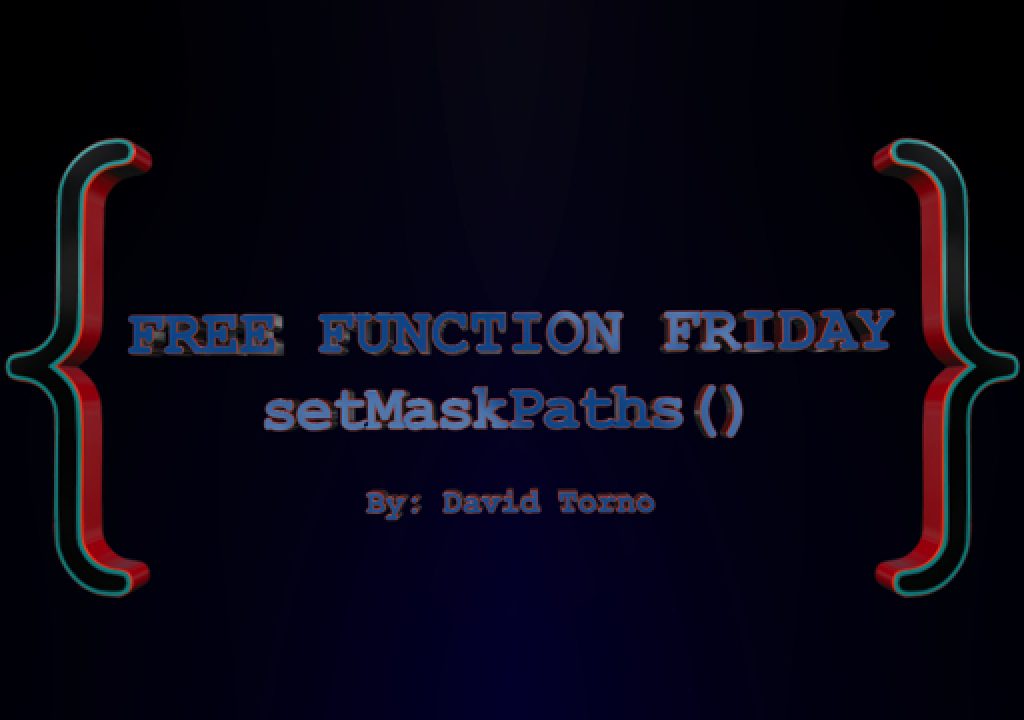Ep. 38 setMaskPaths Free Function Friday

Free Function Friday setMaskPaths
Welcome to Free Function Friday episode 38 setMaskPaths. In this episode we will be creating the companion function for the getMaskPaths function. Please make sure you have watched the getMaskPaths episode 37 before continuing here. I will be referring to that code in this episode and it is required knowledge to make setMaskPaths work properly. We will be going over the shape path attributes again as well since we will now need to assign each of them. The attributes are listed below as reference. You can also follow along with the Adobe After Effects Scripting Guide as I go through the Shape Object section on page 172.
Shape object attributes
closed :When true, the shape is a closed curve.
vertices :The anchor points of the shape.
inTangents :The tangent vectors coming into the shape vertices.
outTangents :The tangent vectors coming out of the shape vertices.
featherSegLocs :The mask path segment (sections of a mask path between vertices) containing each feather point.
featherRelSegLocs :The relative position of each feather point on its mask path segment.
featherRadii :The feather amount (radius) for each feather point.
featherInterps :The feather radius interpolation type for each feather point.
featherTensions :The feather tension at each feather point.
featherTypes :The direction (inner or outer) of each feather point.
featherRelCornerAngles :The relative angle between the two normals on either side of a curved outer feather boundary at a corner on a mask path.
If you haven’t done so already there is a Free Function Friday introduction video located here that has some important information pointing to a few resources that will come in handy when scripting for After Effects.
Episode 38 setMaskPaths:
Legal note: The Adobe ExtendScript code talked about in this article and accompanying embedded video(s), and/or graphic images are not guaranteed to be compatible with every version of After Effects. David Torno, ProVideo Coalition, and Moviola will not be held liable for any misuse or incorrect use of the provided ExtendScript code. Use at your own risk.
All of the code I provide in this series, has been created and tested in After Effects CC 2014. Unless otherwise specified in the episode, the code should be compatible with After Effects CS6 through CC 2015. I’ve done my best to avoid depreciated code (code that Adobe removed at some point), and made these functions as compatible as possible. There will however be the occasional piece of code that is brand new as of a certain version of After Effects and therefore will not be backwards compatible from that version. I will mention these if that is the case.
With that said, all the code I provide in this series is open source and free to use in your scripts. I highly encourage you to expand and improve upon the code I provide and start making your own custom functions as well, but please do not repost the code I show in this series as is and claim it as your own. If you use any of the code provided in this series please give credit where credit is due. This series is meant to provide, what I feel is useful code, as well as to hopefully further explain ExtendScript and it’s quirks. While the functions we build throughout this series can perform a task all on their own, they are not meant to be a solo script. How you combine them together and expand upon them is when you will gain the most from these functions.


